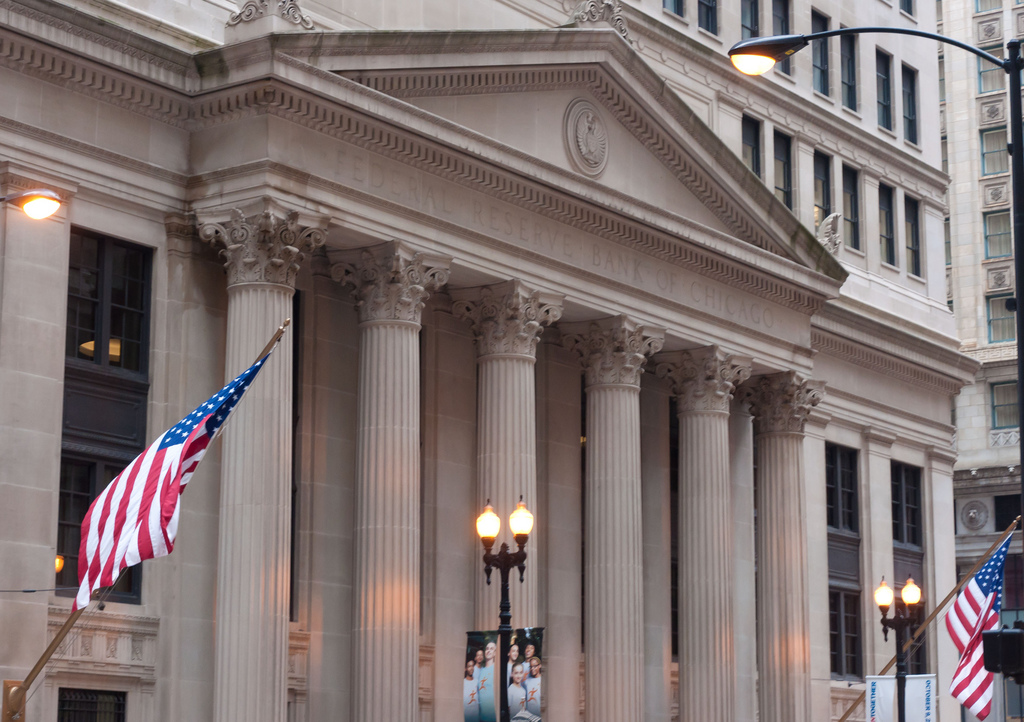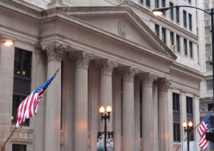What is happening from the beginning of 2016 on the global financial markets can be compared to a tsunami. The waves are spreading from China, and bringing down stocks, currencies and commodity prices around the world, making no distinction between developed and developing economies. Stock markets are crumbling, experts are marking slowdown in industrial production and business activities, even despite that raw materials seemingly becoming cheaper are an absolute boon for consumers, processors and producers of final goods. Return of capital from developing countries to domestic markets of the US, EU and Japan should, in theory, also support their economies. Yet, none of this is happening. On the other hand, the uncertainty is increasing even in the leading countries of the financial world, leave alone others.
Among the reasons that launched the destructive wave are slowing China with its predicted "hard landing", the drop in oil prices due to the dumping of mining and overproduction, currency wars and competitive devaluations, as well as an overall reduction in global trade. Actions of the US Federal Reserve are standing alone, yet some experts are sure that the strong dollar could affect the global markets the most.
Financialization
There is the so-called financialization, i.e. a constant process of transformation of real commodity markets in financial. On the last, prices are determined not only by the fundamental relation of supply and demand for goods, but also value and volume of funds supply. Commodities have long been financial instruments. Breakdown of cash and capital flows in the world now is largely affected by behavior of the major reserve currency - the dollar and US monetary cycles. At that, financialization puts virtually all markets dependent on the Fed's policy or state of the US economy: let us remember the mortgage crisis of 2007-2008, which broke into the world.
Three quantitative easing programmes of the US Federal Reserve, acting in the period from November 2008 to October 2014, stopped the global economic crisis, reduced the systemic risk caused by the investment boom in emerging and commodity markets, yet also inflated new bubbles.
Oil, for example, started its decline in autumn 2014, when the Fed finished monetary stimulus. Last year, capital flight from China was constantly increasing heated up by expectations of a rate hike at the Fed. Finally, inevitable happened. In December 2015, American monetary authorities raised interest rates higher. Moreover, announcing fourfold rate hike possible in 2016, the Fed made it clear that the era of cheap money and expensive raw materials has ended and the world entered a new super cycle that can radically change the whole global economic , and perhaps the political system.
Too soon to rejoice
The rate was increased despite warnings of many influential financiers and experts that the crisis has not been overcome yet, the US economy still shows weakness and there is no real reason for a fundamental change in monetary policy. In many respects, it has been done to finally fulfill promise to begin the long-awaited increase and the players’ expectations. Global financial markets eagerly accepted the December rise in the range of the Fed’s interest rates thinking that problems are over. However, January knocked them down a peg.
The US Federal Reserve is the center of the global reserve currency issue, and all markets operating in US dollars are interrelated without exception. In an effort to compensate for the outflow of capital caused by the actions of the Federal Reserve, China and a number of countries - partners of the United States - responded with either devaluation their national currencies, or challenging countermeasures to rectify the trade balance, and in fact, started dumping trade, "exporting deflation" and "currency war." Where capitals are going now? It turns out that nowhere. Uncertainty increased risks so much that global players are concerned not about finding investment ideas, but only saving their money.
The USA encountered changes in the Fed’s monetary policy by immediate decrease in production of goods and services in the real economy. The US stock market collapse was caused not so much by emotions on the news from China, as by a reaction to the sharp drop in business activity indices, such as the ISM Manufacturing PMI and the Empire State Manufacturing, reaching, according to published in the January data, the lowest level since 2009.
What's next?
January 27, 2016, Open Market Committee (FOMC) at US Federal Reserve decided to leave the target range of the base interest rate unchanged at 0.25-0.5%.
The situation for the last month has changed so much that the US Federal Reserve will have to willy-nilly adjust their plans to further tighten monetary policy, shift timing of rate hikes and recognize the negative effects. Otherwise, the "super strong" dollar and deflation will start the process of catastrophic contraction of global finance, a kind of gravitational collapse.
No one can predict what the Fed will do next, but the financial markets are used to pending. Positive expectations give hope to rebound after falling and some stabilization, including oil prices.
However, we should not experience the illusion that the problem will disappear after clarifying the Fed's policy and that this policy will align with market expectations. There is a famous phrase of former Fed chairman Alan Greenspan: “If you have the impression that you have understood me, then, You did not listen”.
Among the reasons that launched the destructive wave are slowing China with its predicted "hard landing", the drop in oil prices due to the dumping of mining and overproduction, currency wars and competitive devaluations, as well as an overall reduction in global trade. Actions of the US Federal Reserve are standing alone, yet some experts are sure that the strong dollar could affect the global markets the most.
Financialization
There is the so-called financialization, i.e. a constant process of transformation of real commodity markets in financial. On the last, prices are determined not only by the fundamental relation of supply and demand for goods, but also value and volume of funds supply. Commodities have long been financial instruments. Breakdown of cash and capital flows in the world now is largely affected by behavior of the major reserve currency - the dollar and US monetary cycles. At that, financialization puts virtually all markets dependent on the Fed's policy or state of the US economy: let us remember the mortgage crisis of 2007-2008, which broke into the world.
Three quantitative easing programmes of the US Federal Reserve, acting in the period from November 2008 to October 2014, stopped the global economic crisis, reduced the systemic risk caused by the investment boom in emerging and commodity markets, yet also inflated new bubbles.
Oil, for example, started its decline in autumn 2014, when the Fed finished monetary stimulus. Last year, capital flight from China was constantly increasing heated up by expectations of a rate hike at the Fed. Finally, inevitable happened. In December 2015, American monetary authorities raised interest rates higher. Moreover, announcing fourfold rate hike possible in 2016, the Fed made it clear that the era of cheap money and expensive raw materials has ended and the world entered a new super cycle that can radically change the whole global economic , and perhaps the political system.
Too soon to rejoice
The rate was increased despite warnings of many influential financiers and experts that the crisis has not been overcome yet, the US economy still shows weakness and there is no real reason for a fundamental change in monetary policy. In many respects, it has been done to finally fulfill promise to begin the long-awaited increase and the players’ expectations. Global financial markets eagerly accepted the December rise in the range of the Fed’s interest rates thinking that problems are over. However, January knocked them down a peg.
The US Federal Reserve is the center of the global reserve currency issue, and all markets operating in US dollars are interrelated without exception. In an effort to compensate for the outflow of capital caused by the actions of the Federal Reserve, China and a number of countries - partners of the United States - responded with either devaluation their national currencies, or challenging countermeasures to rectify the trade balance, and in fact, started dumping trade, "exporting deflation" and "currency war." Where capitals are going now? It turns out that nowhere. Uncertainty increased risks so much that global players are concerned not about finding investment ideas, but only saving their money.
The USA encountered changes in the Fed’s monetary policy by immediate decrease in production of goods and services in the real economy. The US stock market collapse was caused not so much by emotions on the news from China, as by a reaction to the sharp drop in business activity indices, such as the ISM Manufacturing PMI and the Empire State Manufacturing, reaching, according to published in the January data, the lowest level since 2009.
What's next?
January 27, 2016, Open Market Committee (FOMC) at US Federal Reserve decided to leave the target range of the base interest rate unchanged at 0.25-0.5%.
The situation for the last month has changed so much that the US Federal Reserve will have to willy-nilly adjust their plans to further tighten monetary policy, shift timing of rate hikes and recognize the negative effects. Otherwise, the "super strong" dollar and deflation will start the process of catastrophic contraction of global finance, a kind of gravitational collapse.
No one can predict what the Fed will do next, but the financial markets are used to pending. Positive expectations give hope to rebound after falling and some stabilization, including oil prices.
However, we should not experience the illusion that the problem will disappear after clarifying the Fed's policy and that this policy will align with market expectations. There is a famous phrase of former Fed chairman Alan Greenspan: “If you have the impression that you have understood me, then, You did not listen”.



















